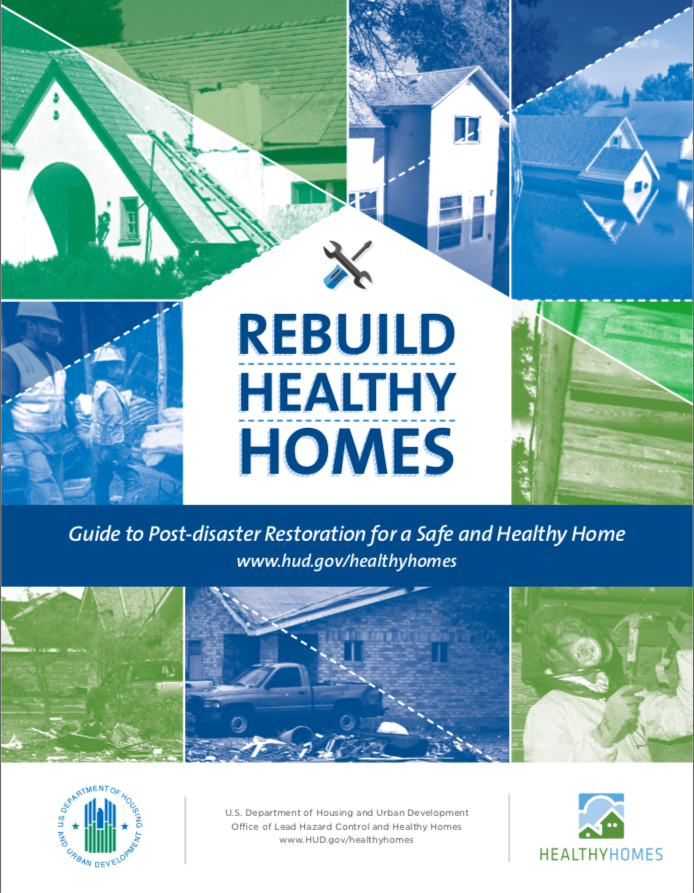
Archived Story: This article is part of our newsletter archives. It has
been preserved for reference, but the information may no longer be current.
Top 10 Tips for Rebuilding Healthy Homes (Excerpt from Rebuild Healthy Homes publication)
- Remind yourself often to put people before property! Make safety your top priority (page 10).
- Wear personal protective equipment (PPE), including protective clothing and a NIOSH-approved respirator, every time you set foot in a damaged or moldy building (pages 11 to 14).
- Assess structural stability and hidden hazards before you enter. A professional inspection may be needed (pages 15 to 30).
- Prepare a plan (supplies and methods), make a map (disposal and clean-up site layout), and review insurance policies and disaster assistance resources (pages 3 and 30 to 33).
- Go slow when pumping out water, then act fast to dry out and remove mold. Copy and share the DIY Mold Removal Guidelines sheet with workers (pages 41 and 50 to 53).
- Always remove wet insulation and foam padding, even if the surface looks dry and clean (pages 48 and 49).
- Assume lead-based paint and asbestos are in homes built before 1978 (unless verified not present). Be mindful that disturbing such materials increases the hazard (pages 24 to 28).
- Control dust, capture debris and contain contaminants – with wet methods, drop cloths, debris bags, HEPA vacuums and workers trained in safe work practices (pages 25 to 28, 39 and 40).
- Check credentials and hire only licensed and insured contractors, Lead-Safe Certified Renovators, certified Asbestos professionals, Mold Remediation Contractors, Fire and Water Damage Restorers, and other professionals, depending on types of work needed (pages 33 to 35).
- Restore for More than Before! Install hazard-resistant materials, connectors and building systems. Include energy-saving and healthy home improvements (pages 53 to 64).
More details at: https://www.hud.gov/program_offices/healthy_homes/disasterrecovery